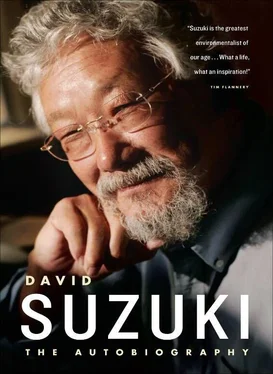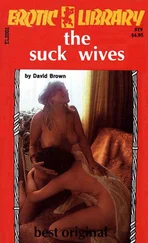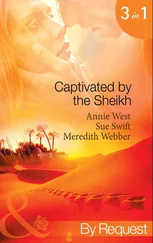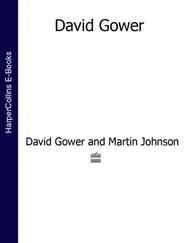One day, when I was supposed to be filming a stand-up at Allan Gardens in Toronto, I urged Vishnu Mathur, the producer, to get a teleprompter for me to use. He did, and I recorded several pieces. It was bliss, because now I could relax, joke with the crew, and generally feel human for a change, delivering my lines flawlessly for each take. When the stand-ups were done, Vishnu was satisfied that they were fine, and we turned them over to Jim, who insisted on screening all my stand-ups so he could select the ones he felt worked best.
Jim was an outstanding executive producer and paid close attention to every aspect of The Nature of Things with David Suzuki . As money for the series began to be cut back during the '80s and '90s, he kept the budget for each show high and reduced the number we put out, rather than lower the quality to maintain the count. He was a stickler for detail, screening rough cuts, deciding on every stand-up, poring over scripts, even checking on color correction of final prints. Producers approached him for his approval at each stage of production with great trepidation, as he was known to tear shows apart and demand that they be completely reedited or even that new footage be shot. But I've always believed it was Jim's attention to detail and demand for quality that made our series so enduring and powerful.
Although Vishnu had gone along with my request to use a teleprompter, he was worried that Jim would see what we had done when he looked at the footage. To our enormous relief, Jim screened the stand-ups and approved them without a murmur — he couldn't tell I was reading off a screen! Now, I thought, the days ahead would be so much easier.
But Jim's temper was notorious. Vishnu was too intimidated to tell him we had fooled him, and I didn't want to get Vishnu into trouble by squealing on him. If we continued to use the prompter, Jim would eventually notice the cost of its rental on our expense sheets. So I kept memorizing my pieces and suffering through the shooting because we didn't have the courage to confront our boss. When Jim reached mandatory retirement age and his replacement, Michael Allder, was appointed, I timorously asked whether we could start using a prompter. To my great relief, Michael's response was, “Of course.”
I know that, to the viewer, working in television might seem exciting and glamorous. But it isn't. Oh, there are moments when one witnesses something spectacular, such as a group of elephant seals on land or whales emitting a curtain of bubbles to surround and drive fish. Those occasions are special, and what adds to that is the knowledge that very few people in the world will ever have that firsthand experience. Through television, it has also been my great privilege to meet some amazing people — lots of Nobel Prize winners and other remarkable people; for example, the English scientist James Lovelock, who coined the term “Gaia hypothesis” to express his idea that Earth is a single living entity; the English primatologist Jane Goodall; the Kenyan paleontologist Richard Leakey, and many others. But most of the time on location, we are filming wide shots, close-ups, and the same scenes over and over from different angles so they can be edited to form a sequence the viewer seldom realizes is a collage.
We usually have one camera on a shoot. When we do an interview, we keep the camera trained on the person being interviewed. When that's over, the camera is repositioned for a “reversal” and I “re-ask” the questions, this time with the camera on me. It's a challenge to remember the way a query was originally asked from off-camera. I also do “noddies,” in which the camera films me nodding or shaking my head, smiling, or looking puzzled, all to provide material an editor can blend to give an illusion that there were two cameras shooting the whole thing. These “reaction shots” also allow an “edit point” in an interview. If a long reply has to be cut at a certain point and then connected to a later part, we cover the edit by putting in a reaction shot. If we shoot a scene without recording sound, it is said to be shot “MOS,” reputedly a take on the Austrian-born American film producer Otto Preminger, who would shout, “This shot is mit out sound,” which became MOS.
WORKING IN TELEVISION HAS been very rewarding and has given me a great deal of pleasure. I have also enjoyed the traveling it has entailed, but there has been a downside as well.
In 1993, Nancy Archibald began to work on a two-hour special on dams. Nancy was Jim Murray's partner and had become the executive producer of The Nature of Things when Jim was recruited to take over The National Dream , the blockbuster series based on Pierre Berton's book and hosted by the prolific Canadian author. Nancy proposed to look at megadams around the world and ascertain whether they had lived up to their promise.
Protests had been launched against a dam proposed on the sacred Narmada River in India, and the charismatic firebrand Medha Patkar had spent years rallying indigenous people who would be flooded out by it. In 1985, the World Bank had committed a $450-million loan to build the dam at Sardar Sarovar, but, led by Patkar, public protest forced the bank to set up an investigative committee in 1991. It was chaired by former United Nations Development Program administrator Bradford Morse of the U.S., and he took on Canadian lawyer Tom Berger as deputy chair.
Having represented the Nisga'a First Nation in a landmark case and consulted other First Nations as commissioner of the ground-breaking Mackenzie Valley Pipeline Inquiry, Berger had a long track record of working with aboriginal people in Canada. The Morse Commission traveled extensively in western India, listening to the people who would be affected most by the project. In the end, the report came down heavily against funding the dam, and the World Bank withdrew its promised support. By then, it had become a matter of national pride, and the Indian government went ahead and built the dam on its own.
When Nancy started filming, the Narmada dam was not yet complete. We applied to the Indian government for permission to film but were turned down when officials discovered that we would be focusing on dams. We decided to film without a permit. As we expected, the country is so vast and complex that there was no way our activity could register in the upper echelons of government before we were already in and out.
We went in December, and although the weather was still warm by Canadian standards, it was winter, when a tremendous amount of coal is burned even by the poorest street people. The air was unbelievably polluted. As we rode in a three-wheeled taxi through the streets of Bombay in early morning, coal dust hung in the air and swirled about in great clouds as we passed by. I found it hard to take a breath and couldn't imagine what the pollution was doing to our lungs. When I returned home, I became very ill with lung congestion. I couldn't shake it, and after ruling out a viral, bacterial, or parasitic infection, my doctors decided I had asthma. Subsequent tests revealed I do not have asthma, but I have been left with chronically weak lungs and allergies that flare up whenever I visit a new city or there is heavy smog.
Another difficult shoot was in 1999, when Geoff Bowie produced a program on the tragedy of the Aral Sea in central Asia. Bounded by Uzbekistan, Tajikistan, Kazakhstan, and Turkmenistan, only a few decades ago this great inland sea was a rich source of fish, including sturgeon, salmon, and plaice, and villages dotting its shores were magnets for summer tourists. The Aral Sea was the fourth-largest inland sea on Earth when the Soviet Union decided to make the surrounding region the cotton center of the world. Soon, vast areas of land were growing cotton, one of the most chemically demanding crops we have. Heavy use of pesticides and fertilizers polluted the sea, and so much water was drawn from the two main rivers, the Amu Darya and Syr Darya, that they were reduced to a trickle.
Читать дальше


![David Jagusson - Devot & Anal [Hardcore BDSM]](/books/485905/david-jagusson-devot-anal-hardcore-bdsm-thumb.webp)









